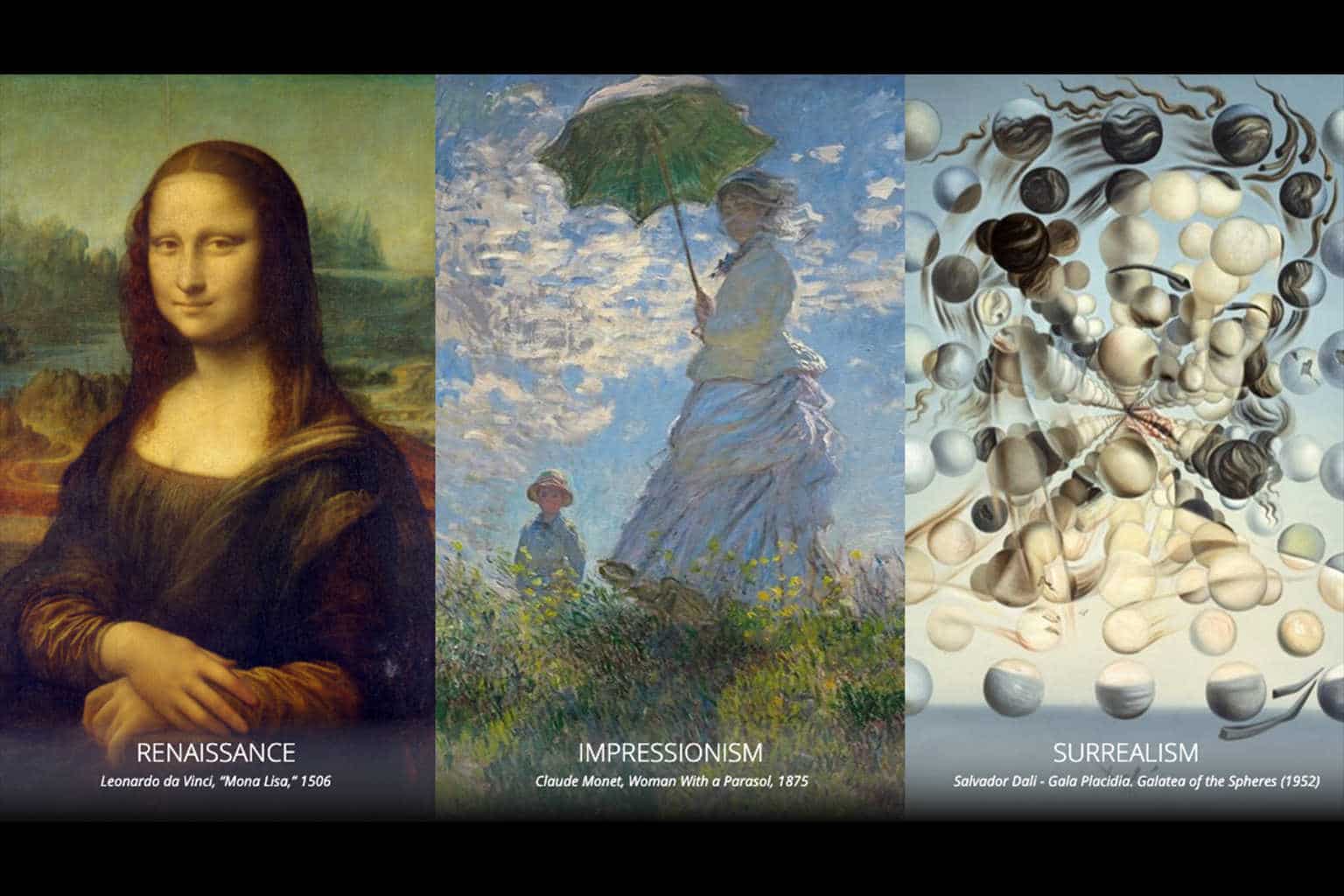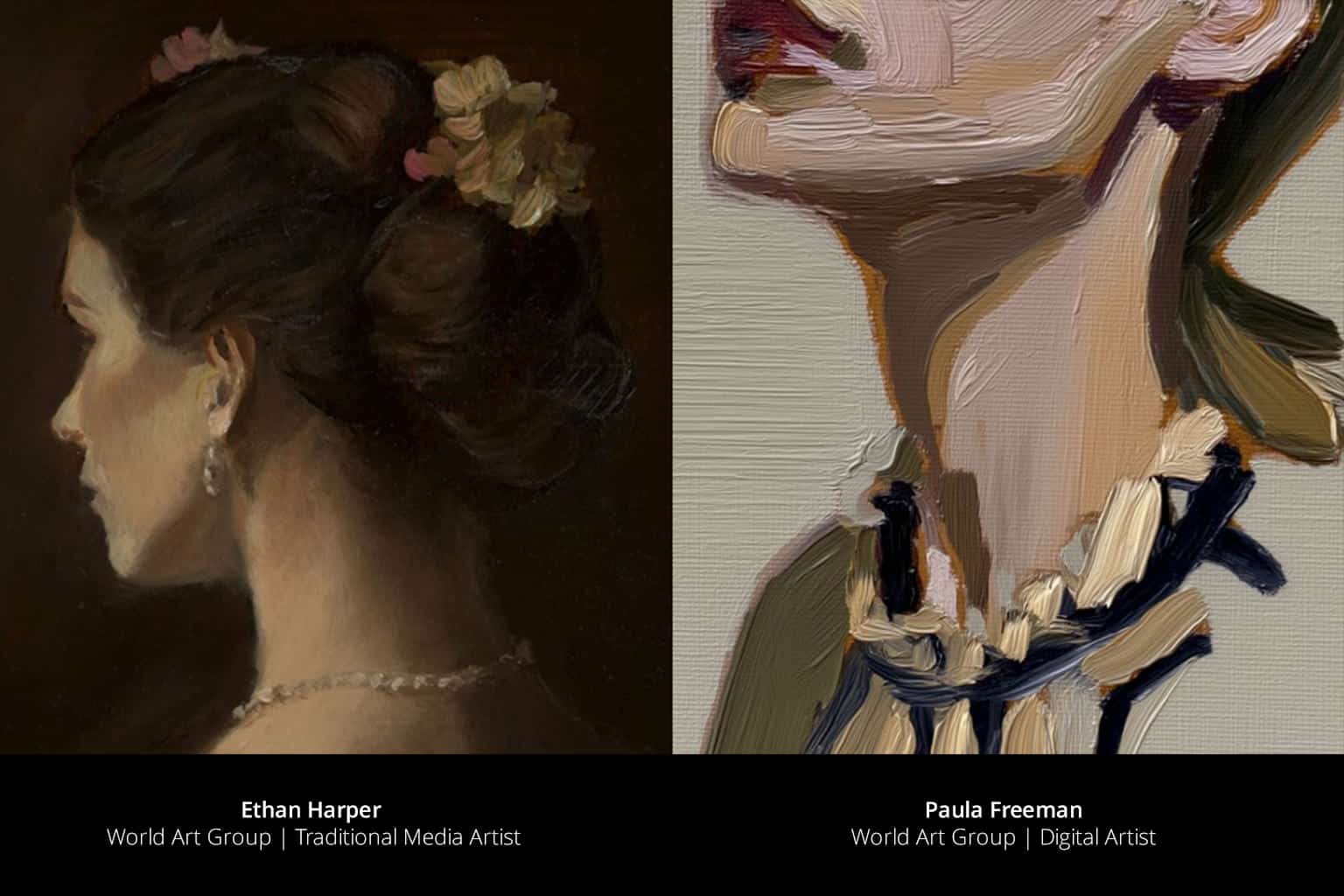
Co-written by:
Chris Young
EVP, Enterprise Sales & Marketing

Co-written by:
Jen Corbett
Director of Art
Here’s why the future of creativity still belongs to people, and how we can use AI not to replace us, but to reimagine what we’re capable of.

A New Creative Crossroads
Artificial Intelligence is transforming the creative landscape faster than anyone imagined. Tools like Midjourney, DALL·E, ChatGPT, and Gemini can now generate in seconds what used to take teams weeks. It’s fascinating, and a little unsettling. Because while AI can make things faster, it can’t make them meaningful.
We live at the intersection of art, technology, and emotion. Every print, product, and partner we work with is part of something deeper—a connection between creation and experience.
And that’s why the real question isn’t, “Can AI make art?”
It’s, “Can AI make art that matters?”
The Power and the Paradox of AI
AI is an incredible amplifier of creativity. It gives artists, designers, and brands new ways to explore and scale their vision. But with that power comes a paradox. What happens to authenticity when creation becomes automated?
True art carries a maker’s mark. A reflection of the hesitation, emotion, and imperfection of being human. When AI steps in, the process often becomes sterile—efficient, yes, but missing the soul that makes something memorable.
AI can simulate the look of creation, but not the life within it.
The difference between creating something and creating something that moves people is where humanity still leads.
Human Creativity: A History of Reinvention
If you look back through art history, you’ll notice a pattern: every major creative leap was actually a human response to new technology.
When the printing press emerged, Renaissance artists didn’t panic. They sharpened their craft and pushed individuality even further. When portable paint tubes let artists leave the studio, the Impressionists embraced spontaneity, imperfection, and the experience of painting outdoors. Later, as the world became more industrialized, movements like Surrealism and Abstract Expressionism shifted inward, using emotion, intuition, and even struggle as the medium.
The story repeats itself over and over: technology may change what’s possible, but humans are the ones who give it meaning. That part hasn’t changed at all.

Imperfection Is the Fingerprint of Authenticity
Look closely at any painting, photograph, or handmade product. What draws us in isn’t perfection—it’s presence. A small brushstroke out of place. A bit of texture that catches the light differently. Those tiny flaws remind us: someone cared enough to make this, pouring not only hours but a true, unrepeatable trace of themselves into the piece.
In print-on-demand, we see this every day. The pieces that resonate most aren’t the ones that are flawless, they’re the ones that feel alive. It’s the same reason people treasure a handwritten note over an email. The imperfections make it personal. Imperfection isn’t our flaw—it’s our fingerprint.
Responsible AI: The Next Quality Standard
AI models learn from massive image libraries—some open, some proprietary, and some, unfortunately, unethically sourced. When creative work is scraped without permission, the line between inspiration and imitation gets blurry.
That’s why responsible AI use matters more than ever. The focus needs to be on using closed, licensed data sets—so every image, texture, and creative concept is owned, cleared, and credited.
Just like color accuracy and sustainability became industry standards, AI traceability and creative integrity will soon be part of every quality conversation. Because true innovation doesn’t just mean what we can do, it means how we choose to do it.

Humanity + AI: Better Together
The future of creativity isn’t human or AI—it’s both. AI helps us scale imagination, but people give it meaning.
Here’s how we see the future of creation:
- AI generates possibilities: it speeds up inspiration.
- Humans curate emotion: we give those ideas purpose.
- Print brings permanence: we make digital ideas real.
AI gives us infinite potential. Human judgment gives us direction. And print gives us something to hold onto in an increasingly digital world.
The Takeaway: Meaning Over Machinery
Every technological revolution—whether the printing press, photography, or digital art—was met not just with fear of replacement, but with uncertainty about how it would reshape authorship, power, and the nature of creativity itself. Yet each of these innovations ultimately expanded the boundaries of artistic expression, broadening who had access to it. Over time, they became cornerstone mediums, reshaping culture and often overtaking older forms in an increasingly digital world.
AI is no different. It won’t replace creativity; it will compel us to reexamine its purpose and empower artists to produce work that is singular—irreproducible without human imagination guiding the tool.
At Sensaria, we carry that belief forward. We pair the expertise of classically trained fine artists with cutting-edge AI generative technologies to expand the limits of visual creation. AI here is not a substitute—it’s a catalyst. It empowers our artists to explore compositions, textures, and styles impossible to attempt at scale through traditional means alone. By combining artistic intuition with intelligent tools, we create original work that feels both boundary-breaking and deeply human—without compromising craftsmanship, quality, or authenticity.
We believe the future belongs to creators who blend innovation with intention—who use technology to amplify, not replace, and to build art that couldn’t exist without them.
Because machines can make.
But only people can move.
Final Thought
In a world driven by algorithms and automation, the most powerful thing we can offer is authenticity.
Let’s create responsibly. Let’s lead with empathy. And let’s remember—the art, the product, the print—means something because we made it that way.



